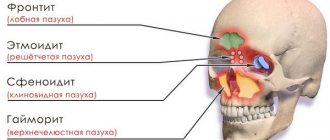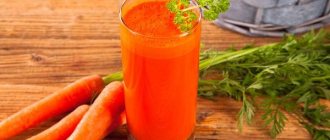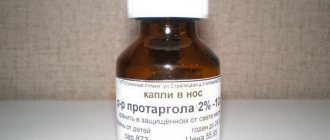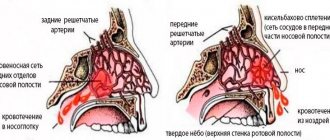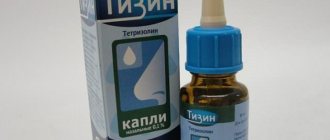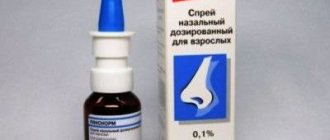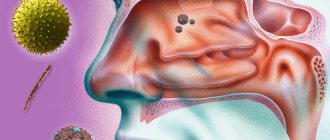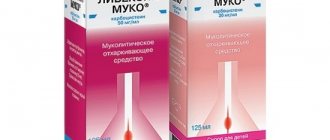Causes of sinusitis
Sinusitis is an inflammation of the mucous membrane of one of the sinuses. Its most common causes are various bacteria, viral infection, as well as fungus or allergen. There are 3 types of sinusitis: catarrhal, purulent and mixed. The first type is the initial stage of the disease, when the patient suffers from a severe runny nose and swelling of the sinuses. This is followed by a purulent stage, when the patient also has an elevated temperature. The mixed type is accompanied by all these signs, as well as mucous and purulent discharge at the same time.
Inflammation may also be associated with:
- abnormalities in the structure of the nose;
- injuries and deformation of the nose during life;
- adenoids;
- nasal polyposis;
- chronic diseases;
- allergies;
- suffered severe forms of ARVI;
- constant colds;
- poor oral hygiene and late visits to the dentist.
There is a group of people who are more susceptible to this disease and the development of its complications. This:
- children from 9 years old;
- aged people;
- asthmatics;
- hospitalized patients with head injuries;
- diabetics;
- HIV-infected;
- people suffering from hormonal imbalances;
- patients with hypothyroidism, cystic fibrosis, Kartagener syndrome;
- Frequent airline passengers who have a hard time with pressure surges.
How to treat at home
At home, only frontal sinusitis and sinusitis are treated. Ethmoiditis and sphenoiditis require professional help, as they develop quickly and lead to serious complications, including blindness and death.
Washing
At home, treatment includes rinsing, which helps the body get rid of mucus, facilitate breathing and relieve swelling. They can be carried out when a patient has acute sinusitis in two ways:
- No equipment. The rinsing solution is taken into the palm of your hand and inhaled through your nose so that the liquid is drawn into one nostril and flows out of the other. It may not work the first time. This means you need to try again.
- With equipment. Buy a syringe, remove the needle and inject the solution into the nostril using it. It's easier than inhaling from your palm.
For rinsing use:
- Mineral water without gas from trusted manufacturers - Borjomi is suitable.
- Saline solution from a pharmacy is used to dilute medications, but can also be used for rinsing.
- Herbal infusions - sage, mint, ginseng, eucalyptus or chamomile are useful. They help wash away snot, soften mucous membranes, making breathing easier.
- Saline solutions. Both table salt and sea salt are useful; stir 2 teaspoons in a liter of water.
After rinsing, blow your nose individually. Do the procedure in the morning and evening before using medications and warming up - then the treatment will be productive.
Drops
Treatment includes drops that are made at home using traditional medicine recipes:
- Squeeze the juice from the onion, dilute it with water 1:2 and instill two drops into each nostril 2 times a day. If pain and burning occurs afterwards, add more water.
- Squeeze the juice from a clove of garlic and dilute with water in the same proportion.
- Wash the aloe or Kalanchoe leaf, squeeze out the juice and dilute with warm water.
- Lemon, beets, carrots - dilute their juices 1:1.
- 1 tsp. dilute honey with two tbsp. spoons of warm water.
If you can’t squeeze out the juice, first grate the vegetable. Do not store the product in the refrigerator, but reapply every day. For dilution, use only boiled water.
Burning, pain, itching and the appearance of blood in the snot are reasons to consult a doctor.
Symptoms
The nose is stuffy, it’s difficult to breathe, the nose hurts and is swollen, and even the whole face seems to be - these are local symptoms of sinusitis. Common symptoms include weakness, fever, and headache.
The disease is divided into several types: sinusitis (when an abundance of pus occurs in the sinuses), frontal sinusitis (affects the frontal sinuses and is the most complex type), ethmoiditis (early stage of sinusitis), sphenoiditis (affects vision).
The consequences of such an illness can be quite sad. So adults can develop diseases such as:
- increased eye pressure;
- purulent meningitis;
- asymmetry of facial muscles;
Children with sinusitis are characterized by the development of inflammation of the middle ear, decreased immunity and a lingering wet cough with pus.
Symptoms of sinusitis in adults
The main role in the development of the clinical picture is played by the Pfeiffer wand. Pneumococcus, streptococcus, moraxella, fungi, and other viruses are rare. The main reason for the development of the disease is improper treatment of rhinitis. Indirect reasons are: allergies, dental diseases, weak immunity. Signs of sinusitis are the following:
- headache, fatigue;
- loss of appetite;
- heat;
- intermittent nasal congestion;
- persistent runny nose with yellow-green discharge;
- severe night cough;
- swelling;
- pain in the face;
- dental examination (odontogenic sinusitis due to dental problems).
Spicy
What is sinusitis characterized by: symptoms and treatment of sinusitis in adults have their own specifics. Maxillary sinusitis is characterized by radiating pain in the maxillary sinuses and the presence of purulent discharge in the acute form. Purulent sinusitis is characterized by cloudy, serous, purulent discharge with an unpleasant odor. Antibiotics are used in treatment. Catarrhal sinusitis is accompanied by mucous discharge.
Acute ethmoiditis has similar symptoms to acute sinusitis. You feel pressure in the eyes and bridge of the nose, there is a loss of sense of smell, and difficulty in nasal breathing. The pathology of the posterior sections of the ethmoid bone is sphenoiditis, and the anterior sections are frontitis. Manifestations of frontal sinusitis are similar to those of ethmoiditis, except for the localization of pain impulses.
- Set-top box for digital television - which is better?
- Eyebrow growth product
- Albumin - what is it in blood and urine tests: instructions for use
Chronic
Chronic sinusitis is sluggish in nature, the symptoms are not pronounced: night cough due to the outflow of purulent accumulations, pain in the maxillary sinuses, weakening in the “lying down” position. With chronic sinusitis, the structure of the mucous membrane of the middle nasal passage changes. Sphenoiditis provokes the development of meningitis and impaired visual activity.
Treatment options
The road to recovery from sinusitis
Everyone has their own, it all depends on the severity of the disease and the health of the patient’s body. Treatment for sinusitis includes several types of therapy, each of which is responsible for eliminating a specific symptom.
One of the effective remedies for sinusitis is rinsing the nose with preparations based on sea water. They are suitable for everyone: small children, adults, and the elderly. Such saline solutions cleanse the mucous membrane and moisturize it, and they are easy to find in every pharmacy. They have no contraindications, just like side effects. Therefore, many people always have Sialor Aqua, Aqualor, Aquamaris or Physiomer ready in their home medicine cabinet.
To relieve inflammation, doctors prescribe anti-inflammatory drugs, for example,
Sialor based on silver ions. It has an anti-inflammatory and antibacterial effect, and also helps reduce swelling of the mucous membrane.
Another of the most common types of comprehensive care for sinusitis is vasoconstrictor medications. They relieve swelling of the mucous membrane and make breathing easier. Such drugs as “Nazol”, “Tizin”, “Vibrocil”, “Otrivin”, “Dlyanos” and others have proven themselves well.
It is important to remember that 3 days is the maximum period for their use.
For sinusitis of allergic etiology ( allergic rhinitis
) specialists prescribe antiallergic agents, for example, Cromohexal.
In difficult cases, doctors have to resort to antibiotics, despite all their known disadvantages. Most often, broad-spectrum drugs are prescribed for sinusitis, such as amoxicillin, azithromycin, clarithromycin, clindamycin.
Unfortunately, in some cases, for effective treatment of sinusitis, surgical intervention is necessary: through special punctures, the fluid, mucus and pus accumulated in the nasal sinuses are pumped out. Afterwards, the sinuses are washed with an antiseptic.
Physiotherapy is prescribed as supporting procedures for complex treatment. This includes heating, currents, laser and magnetic therapy.
Treatment of sinusitis at home in adults
Mild and moderate inflammation does not require constant monitoring by specialists. In such cases, home treatment for sinusitis is feasible. The patient does not experience psychological stress as from inpatient treatment. Treatment of chronic sinusitis in adults occurs on an outpatient basis. However, it requires further efforts to strengthen the body's immune system.
Drugs
Conservative treatment is aimed at eliminating the main symptoms of the disease. Such drugs are used according to the instructions of a specialist. Such medications should not be used for a long time. The vasoconstrictor factor has negative side effects. They cannot be prescribed for hypertension. Complex treatment includes the appointment of:
- anti-inflammatory drugs (erispal);
- sulfonamides (biseptol);
- vasoconstrictors (naphthyzin);
- dental examination (for odontogenic sinusitis).
Antibiotics
The acute form of the disease requires the appointment of etiotropic therapy. The duration of treatment, dosage, and type of drug are prescribed by the doctor. Modern antibiotics can relieve a person of severe forms of sinusitis in 3 days. During a course of antibiotics, you need to use probiotics to help normalize intestinal flora and reduce the load on the liver.
Drops
Nasal drops are an excellent way to treat and prevent sinusitis. When using vasoconstrictor drops, swelling of the mucous membrane decreases. Drops containing antibiotics provide antimicrobial therapy. Products based on sea water have an anti-inflammatory effect. Drops of plant origin rinse the nasal cavity.
- Ribbon embroidery for beginners step by step with diagrams and videos
- How to remove a pattern key from Android if you forgot
- Brazil nuts: benefits and harm to the body
Alternative treatment for sinusitis
Traditional medicine occupies an important place in the treatment of sinus inflammation. Sinusitis: symptoms and treatment of exacerbations in adults? Preference should be given to proven methods. The main role in the treatment of sinusitis is played by hydrogen peroxide 3%. Atomic oxygen is a component of peroxide that copes with many ailments. Add 15-20 drops of peroxide to 1/4 cup of boiled warm water, then rinse the nose with a syringe without a needle.
It is effective to use salt and soda solutions that have anti-inflammatory properties. Add 1 teaspoon of salt/soda to a glass of water. Instill this solution intranasally, 2 drops into each nasal passage. It is effective to rinse the nasal cavity with saline solution. Herbal infusions (thyme, chamomile) and essential oils (cumin, sea buckthorn) have an antiseptic effect. Find out more about how to use saline solution to rinse your nose.
Inhalations
Inhaling the vapors of essential oils helps heal diseases of the upper respiratory tract. Essential oils of coniferous trees are especially beneficial. The addition of menthol, sage, and bay leaf has a beneficial effect. The use of inhalations is contraindicated for people prone to allergies. Vapors that are too hot can burn the respiratory tract.
Folk remedies
It is important to remember that therapy with folk remedies is effective in combination with competent treatment prescribed by a specialist.
So, there are several popular home treatment procedures for sinusitis. Washing is in first place in this rating. Aloe juice is often used: it relieves inflammation and kills bacteria.
You can also rinse your nose with saline solution. For 1 spoon of sea salt - 0.5 liters of water at a comfortable temperature.
There are two options for rinsing your sinuses at home. Over the sink, you need to turn your head to the side, bend over, and use a syringe to inject the solution into one nostril so that the water will soon flow out of the second. Turn your head to the other side and repeat the procedure. Instead of a syringe, you can use a small teapot with a narrow spout or simply scoop the salt solution into your palms and suck it in with your nose, close your nostrils with your hand, tilt your head to the side, and exhale sharply through your nose. Both schemes are equally effective. It all depends on the comfort of the procedure for each individual patient.
It is important to note that nasal rinsing, while a useful procedure, is also associated with a high risk of inflammation, especially in young children.
During rinsing, water flows under pressure into the nose and nasopharynx. If the water does not have time to escape through the nose and mouth (which happens if there is a lot of water or the person has a stuffy nose, therefore, the water cannot escape due to swelling of the mucous membrane), it goes into the auditory tube. The result is an inflammatory process that develops into acute otitis media. The anatomical features of children increase the risk of spreading the inflammatory process if water gets into the ear canal.
You can also prepare nasal drops at home. This can be simply Kalanchoe juice (2 drops 3 times a day for 10 days) or a solution from mumiyo. Mix 0.2 g of mumiyo with a spoon of boiled warm water and 0.5 tsp. glycerin. Place 1-2 drops in each nostril.
Propolis is also effective. For 1 spoon of propolis tincture, take 1:1 sea buckthorn oil. Instill 2-3 drops 3 times a day.
At home, it is possible to use Vishnevsky ointment. Mix 1 spoon of ointment with onion juice, aloe, Kalanchoe and honey. Apply a little ointment to 2 gauze swabs and insert into the nose. Repeat 2 times a day for 10 days.
For sinusitis, you can do inhalations. Simple steam inhalations using common herbs, such as chamomile, will help. If you also have a cough, you can use mint and eucalyptus.
What else can you do to help yourself at home? You can make a mixture of eucalyptus and olive oils and apply it to the nose area a couple of times a day.
You can take a strengthening cocktail that will help the body during illness. Add the optimal amount of water to 2 tablespoons of turmeric, lemon juice, a pinch of red pepper, 1 tablespoon of honey and drink 2-3 times a day. Hot Echinacea tea is also an excellent tonic. Red or black pepper added to food stimulates the cleansing of the nasal passages.
It is important to remember that home treatment should not be the only one. You need to consult a doctor in a timely manner. In addition, it is also better to consult a specialist about home treatment and folk remedies.
What folk recipes are used for this?
Traditional medicine has many methods that are included in the complex of therapy for a disease such as sinusitis; treatment with folk remedies includes the following procedures:
- rinsing the nasal cavity;
- inhalation;
- compresses for the sinuses;
- use of medicinal ointments;
- nasal instillation.
In addition, the Yamik medical procedure can be performed at home, which is designed to cleanse the nasal cavity of accumulated mucus, for which a catheter is used.
One of the popular ways to treat sinusitis in children and adults is to rinse the nasal cavity using various solutions. To carry out the procedure, you can take solutions including sea salt, potassium permanganate, iodine and propolis. You can also rinse with infusions of medicinal herbs, such as chamomile, calendula, string, St. John's wort, sage, currant leaves. You can also use mineral water from which gas has been released in advance.
For the washing procedure to be effective, it must be carried out as follows:
- close one nostril;
- draw in the medicinal solution through the second nostril;
- allow the liquid to flow out of the nose on its own;
- completely free the nostril from the solution by blowing it.
The next method of getting rid of sinusitis is inhalation.
There are a lot of ways to carry them out. The simplest of them is inhalation using potatoes boiled in their jackets. Due to the simplicity of its implementation, it is perfect for treating adults and children of any age. When starting the procedure, it is important to properly prepare the potatoes - you need to remove all excess liquid. To do this, after the potatoes are cooked, you should drain the water from them and put the pan on the fire for a few more seconds, making sure that it does not start to burn. Next, you need to remove the pan from the stove, position yourself so that your head is above it, and cover with a large towel. You can begin treatment - breathe hot steam.
Another remedy that can be used for inhalation is garlic. It can be used either fresh or filled with hot water. Thanks to the phytoncides found in garlic, it is effectively used to combat various colds, as well as sinusitis. However, it is not recommended to overuse this procedure, since frequent exposure to garlic odor can lead to irritation of the nasal mucosa. In addition, it is not advisable to use it on children. Their mucous membrane is very delicate, so irritation may appear after the first procedure.
Sinusitis in children and adults can be treated with compresses on the sinuses. For this procedure, folk remedies such as heated sea salt or river sand, rye flour mixed with honey and hard-boiled eggs are used.
These methods should be used very carefully, as improper handling can cause burns. This procedure is carried out for 20-30 minutes, after which the nose should be covered with a warm towel and held until it cools completely. This method can quickly relieve swelling of the nasal mucosa in children, since the use of vasoconstrictor drugs is not recommended for them.
Medicinal ointments prepared at home can also be used to treat sinusitis. There are many recipes for such drugs that are effective when used for children and adults. The main components that can be used are glycerin, iodine, menthol, honey and baby cream. The principle of their use is to apply the ointment to the mucous membrane of the nasal cavity.
The most popular methods of treating sinusitis are nasal drops, including the use of vasoconstrictors, as well as solutions prepared at home. For this you can use fresh beet or carrot juice, garlic juice diluted with water. Another recipe for nasal drops that can be used for adults and children is aloe juice with the addition of a few drops of honey.
Prevention
The main prevention of sinusitis is to avoid hypothermia and not catch a cold. You should always choose your wardrobe according to the weather.
It is important to remember that sinusitis can be the consequence of a serious mistake: not paying attention to a prolonged runny nose or symptoms that are not typical for a common cold, not consulting a doctor or delaying treatment and not following the doctor’s instructions.
In order to prevent ARVI from leading to the consequences of sinusitis, you also need to take care of your body in advance, lead a healthy lifestyle and strengthen your immune system: give up junk food, play sports, drink more clean water and strengthening herbal teas.
It is especially important to take care of the prevention of influenza and ARVI in children
, because they are most susceptible to seasonal diseases.

